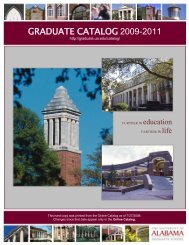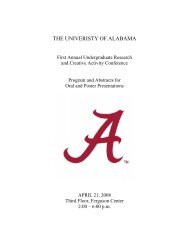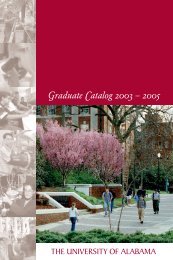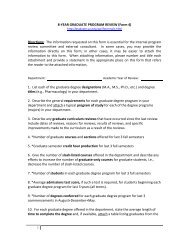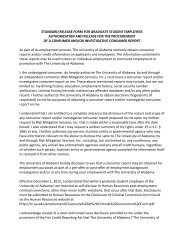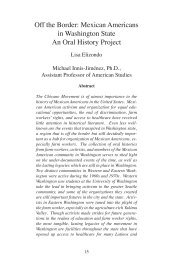Letters from a Planter's Daughter: Understanding Freedom and ...
Letters from a Planter's Daughter: Understanding Freedom and ...
Letters from a Planter's Daughter: Understanding Freedom and ...
Create successful ePaper yourself
Turn your PDF publications into a flip-book with our unique Google optimized e-Paper software.
his children, it was apparent <strong>from</strong> “the tenor of his conversation <strong>and</strong> the<br />
manner in which he spoke of them that he believed nine of the twelve to be<br />
his children” 38 —the remaining three being Edmund’s daughters, Elizabeth<br />
<strong>and</strong> Virginia, <strong>and</strong> Samuel’s final mistress, Elvira. Samuel Townsend, who<br />
used <strong>and</strong> discarded seven women so casually over the years, nevertheless<br />
seems to have cared for his children—perhaps even loved them. He<br />
certainly took great pains to ensure they inherited his now much-enlarged<br />
estate. And maybe out of a sense of loyalty to his dead brother Edmund,<br />
Samuel instructed Cabaniss to purchase Elizabeth <strong>and</strong> Virginia away <strong>from</strong><br />
John E. Townsend—who had inherited them as part of his half of Edmund<br />
Townsend’s estate. Even before he had the two girls living with their cousins<br />
in 1856, Samuel Townsend wrote them tentatively into his first two<br />
wills as equal heirs beside his own children. 39<br />
As Samuel Townsend had predicted, after his death in 1856 his white<br />
relatives petitioned the validity of the will. The challenge to Samuel<br />
Townsend’s promise of freedom, money, <strong>and</strong> legitimacy would have come<br />
as no surprise to the enslaved Townsend women. Elizabeth <strong>and</strong> Virginia<br />
would well remember the anxiety of the controversy surrounding their own<br />
father’s will—as well as the heartbreak following the court’s judgment<br />
that they were, despite a life of acknowledgment by their father as “free<br />
mulattos,” slaves after all. Perhaps Lizzie <strong>and</strong> Jinny were the cynics of the<br />
Townsend household—unwilling to raise their hopes again <strong>and</strong> shaking<br />
their heads at the naiveté of the cousins who trusted in S. D. Cabaniss.<br />
Their brother Woodson may have ranted his frustration over dashed hopes<br />
<strong>and</strong> personal disenfranchisement to his wife Caroline—or more likely, his<br />
lover Elvira. Elvira was plausibly the central source of information for<br />
the rest of the potential Townsend heirs. She may have learned about the<br />
workings of the legal system during her three years as Samuel Townsend’s<br />
mistress <strong>from</strong> 1853 to 1856; <strong>and</strong> the petitioners against his will singled<br />
her out as more than a passive witness to the legal process, painting her as<br />
a powerful temptress even as she remained a vulnerable enslaved young<br />
woman. 40<br />
155<br />
<strong>Letters</strong> <strong>from</strong> a Planter’s <strong>Daughter</strong><br />
38 Ibid.<br />
39 Samuel Townsend, will dated November, 1854.<br />
39 Bernie D. Jones, Fathers of Conscience: Mixed-Race Inheritance in the Antebellum South<br />
(Studies in the Legal History of the South, Athens, GA: University of Georgia Press, 2009).<br />
40 Bernie D. Jones, Fathers of Conscience: Mixed-Race Inheritance in the Antebellum<br />
South (Studies in the Legal History of the South, Athens, GA: University of Georgia Press,<br />
2009).



